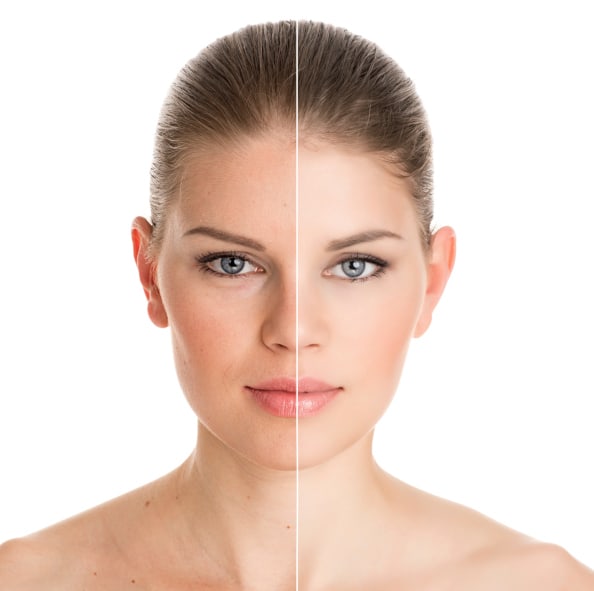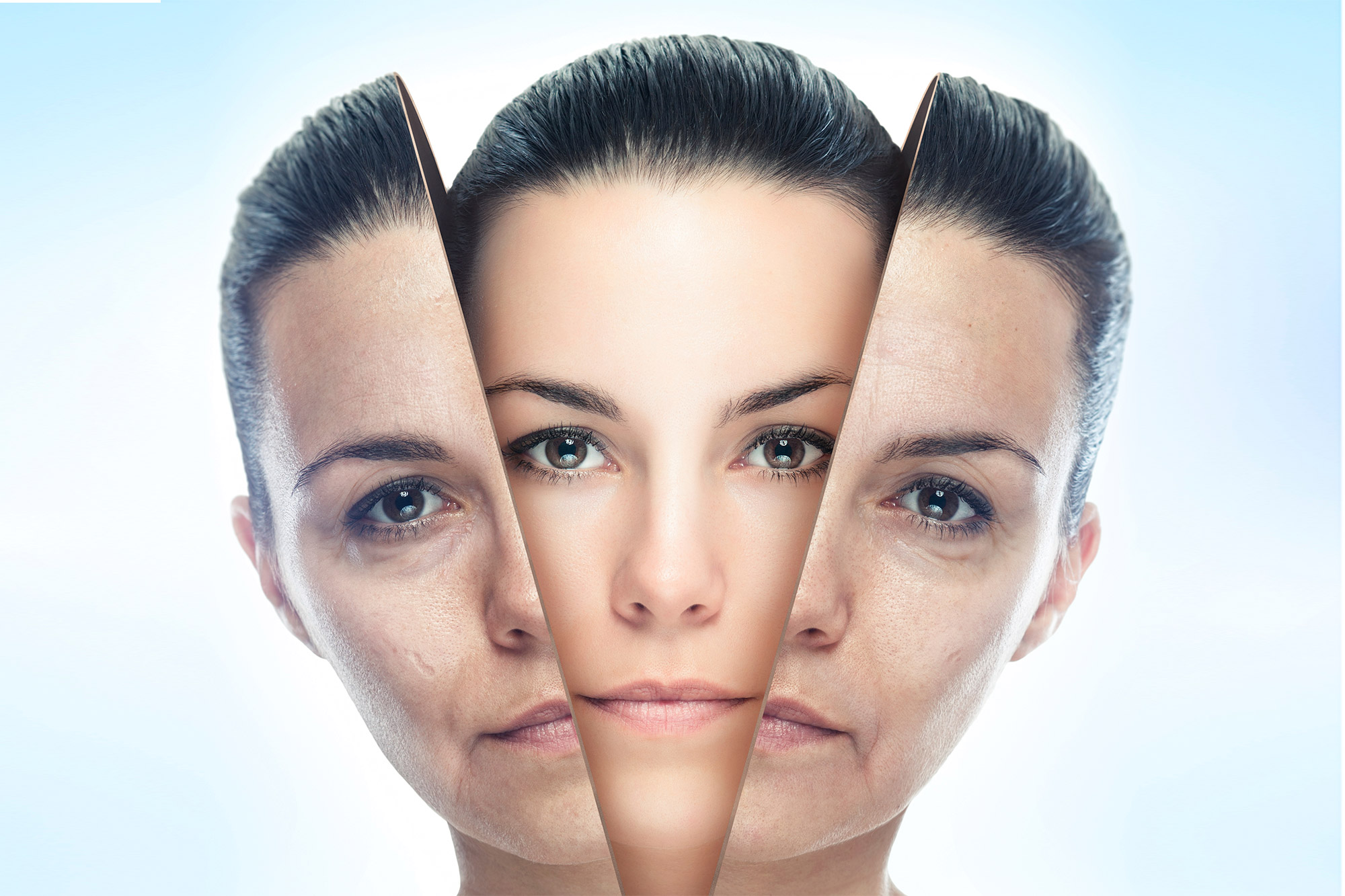Understanding the Purpose of Peels
Skin Renewal
Chemical peels work by removing the top layers of skin. This process reveals smoother, more youthful skin beneath. It’s a form of exfoliation that goes beyond what typical at-home treatments can achieve.
Peels can significantly reduce signs of aging. They tackle wrinkles, fine lines, and uneven skin tone with precision. The result is a rejuvenated appearance that many find desirable.
Issue Addressing
These treatments are not just for anti-aging. They also correct discoloration, acne scars, and sun damage primarily on the face. Each peel is tailored to address specific issues, making them versatile in skincare.
By targeting these concerns, peels improve skin texture and complexion. Patients often notice a dramatic difference in their skin’s appearance after just one session.
Depth Variations
Peels come in various depths: light, medium, and deep. Light peels are gentle and require no downtime. They’re ideal for minor imperfections and maintenance.
Medium peels go deeper, targeting more pronounced issues like significant discoloration and moderate wrinkles. Recovery time is longer but results are more noticeable.
Deep peels offer the most dramatic transformation. They reach the deepest layers of skin to correct severe concerns. These deeper peels demand significant recovery time but provide long-lasting results.
Identifying Potential Risks
Patient Selection
Proper patient selection is crucial. Professionals assess skin type and medical history. This ensures safety and effectiveness.
Individuals with certain skin types may experience adverse reactions. It’s important to consult a professional before proceeding.
Common Side Effects
Most people will notice redness and peeling. Sensitivity to sunlight is also common after the procedure.
These side effects are usually mild and temporary. However, they require proper care and monitoring to avoid complications.
Serious Risks
Although rare, some individuals face serious risks. Scarring and changes in skin color can occur, especially with deeper peels.
Understanding these potential complications is vital. It helps in making an informed decision about undergoing a skin rejuvenation peel.
Contraindications
Not everyone is a suitable candidate for this treatment. There are specific contraindications to consider.
Professionals identify conditions that might increase risk or lead to complications. This step is essential in protecting patient well-being.

Preparing for Your Peel Procedure
Skin Assessment
Consulting with a skincare professional is crucial before undergoing any skin peel procedure. They can help determine whether a light, medium, or deep peel best suits your skincare goals. Light peels target the outer layer of skin for minor improvements, while medium peels and deep peels reach the dermis to address more significant issues like deep wrinkles.
A dermatologist will assess your face’s skin condition and discuss desired outcomes. This ensures the chosen peel type aligns with your expectations.
Medication Review
Certain medications and skincare products can increase skin sensitivity or interfere with the results of a peel. It’s essential to inform your dermatologist about any current medications.
They may advise stopping specific treatments weeks before the procedure. This step minimizes potential complications and enhances the effectiveness of the peel.
Pre-Peel Regimen
Adopting a pre-peel skincare regimen prepares your skin for optimal results and reduced recovery time. This might include using gentle cleansers and hydrating ointments recommended by your dermatologist.
Avoiding makeup and direct sunlight days before the treatment also helps prevent irritation. Following these guidelines ensures your skin is in the best condition for receiving a peel.
What to Expect Before the Peel
Initial Consultation
The journey to skin rejuvenation begins with an initial consultation. During this meeting, a professional will analyze your skin carefully. They look for scars, redness, and other concerns. Setting realistic expectations is crucial. Not all peels deliver dramatic results in one go.
Professionals stress the importance of patience. They explain how each skin type reacts differently to peels.
Patch Test
A patch test is often necessary, especially for stronger peels. This step ensures you don’t have adverse reactions. It involves applying a small amount of the peel solution to your skin and monitoring it for a few days.
This precaution helps tailor the treatment to your specific needs, minimizing risks.
Multiple Sessions
Be prepared; achieving your dream skin might require multiple sessions. Light or medium peels often need several applications over time to reach the desired outcome.
Experts emphasize that consistent treatment leads to better results. They advise on the number of sessions based on your initial skin analysis.
The Peel Process Explained
Peel Application
The chemical solution is carefully applied to the skin, initiating the peel process. This step varies in duration but typically lasts a few minutes. Patients often describe a tingling or burning sensation during application. It’s crucial that this procedure is performed by professionals to ensure safety and effectiveness.
Professionals adjust the solution’s pH level for optimal results. This precision ensures the peel penetrates the desired skin layers without causing undue harm.
Light Peels
Light peels target the outermost layer of skin. They use gentle acids like alpha-hydroxy acid (AHA). The application technique is less invasive, requiring minimal downtime. Patients can expect slight redness but will notice improved skin texture shortly after.
Medium Peels
Medium peels delve deeper, reaching the middle layers of skin. They often employ trichloroacetic acid (TCA) for better penetration. This level of peel requires more recovery time due to its intensity but offers significant improvements in skin appearance.
Deep Peels
Deep peels are the most intensive, affecting several layers of skin. Phenol is commonly used for its deep penetrating abilities. These peels demand a lengthy recovery period and are usually a one-time procedure with lasting effects.
Caring for Your Skin Post-Peel
Gentle Routine
After undergoing a skin rejuvenation peel, adopting a gentle skincare routine is crucial. The new skin is sensitive and requires products that support healing without causing irritation. Opt for fragrance-free cleansers and moisturizers that hydrate and soothe the skin. Avoid ingredients like retinoic acid initially, as they can be too harsh on the recovering skin.
It’s essential to use products tailored for sensitive skin types. They help in managing conditions such as acne scars and improving skin texture without aggravating the skin.
Sun Protection
The importance of sun protection cannot be overstated post-peel. New skin is particularly vulnerable to sun exposure, which can lead to complications including actinic keratosis. A broad-spectrum sunscreen with an SPF of 30 or higher should become a non-negotiable part of your daily routine. Reapply every two hours when outdoors to shield the skin effectively.
Wearing hats and seeking shade are additional measures to protect the newly exposed layers from harmful UV rays.
Recovery Timeline
Peeling and recovery times vary based on the depth of the peel. Light peels might require only a few days to heal, while deeper peels could take weeks. During this period, it’s vital to monitor your skin’s response closely.
Resume regular skincare practices gradually, paying attention to how your skin reacts. For individuals with specific concerns like acne vulgaris or uneven skin tone, consulting a dermatologist before reintroducing active ingredients is advisable.
Anticipating the Results
Immediate Outcomes
Patients often see immediate changes in their skin’s appearance after a skin rejuvenation peel. These early results can include brighter, more even-toned skin. However, it’s essential to understand that redness and swelling are common side effects in the days following the treatment.
The initial phase also involves the shedding of old cells, making way for new, healthier ones. This process might appear unsettling but is a critical step towards improved skin texture and tone.
Long-Term Effects
For those seeking more dramatic transformations, patience is key. The full benefits of a skin rejuvenation peel unfold over weeks to months. Consistent aftercare, as discussed in “Caring for Your Skin Post-Peel,” significantly influences these long-term outcomes.
With proper care and potential follow-up treatments, patients can expect a significant improvement in their skin’s overall health. Conditions like fine lines, wrinkles, and discoloration gradually diminish, revealing smoother, more youthful-looking skin.
Maintenance Tips
To prolong the effects of your peel and maintain optimal skin health, integrate a consistent skincare routine into your daily life. This includes using sunscreen to protect against UV damage and applying moisturizers to keep the skin hydrated.
Regular check-ins with an interprofessional team can also help tailor your skincare regimen over time, ensuring your skin remains vibrant and healthy.
Summary
Skin rejuvenation peels offer a promising path to achieving brighter, smoother, and more youthful skin. By understanding the purpose, preparing adequately, and following through with proper aftercare, you’re setting the stage for optimal results. Acknowledging potential risks and knowing what to expect demystifies the process, making it less daunting. The anticipation of seeing your skin’s transformation can be exciting, but remember, patience and adherence to post-peel care are key to ensuring your skin heals beautifully.
The journey to radiant skin doesn’t stop at the peel; it’s an ongoing commitment to caring for your skin. If you’re ready to take the next step in your skincare routine, consult with a professional to find out if a skin rejuvenation peel is right for you. Let this be your call to action towards embracing a more confident and glowing you. Start your journey today—your skin will thank you.
Frequently Asked Questions
What is the main purpose of a skin rejuvenation peel?
Skin rejuvenation peels aim to remove dead skin cells, enhance skin texture, and promote the growth of new, healthier skin layers, leading to a more youthful appearance.
Are there any risks associated with skin peels?
Yes, potential risks include redness, swelling, and in rare cases, scarring or infection. It’s crucial to consult with a professional to minimize these risks.
How should I prepare for a peel procedure?
Preparing involves avoiding certain medications and skincare products that can increase sensitivity. Your specialist will provide a tailored prep plan based on the peel type and your skin condition.
What happens before the actual peel process begins?
Before the peel, your skin will be cleansed thoroughly to remove any impurities. A pre-treatment assessment may also be conducted to finalize the peel’s strength and type.
Can you explain the peel process briefly?
The peel process involves applying a chemical solution to exfoliate dead skin layers. The specific formula used varies depending on your skin’s needs and the desired outcome.
What post-peel care is necessary?
Post-peel care includes keeping the skin hydrated, avoiding direct sunlight, and using recommended gentle skincare products to aid in healing and protect new skin growth.
What results can I expect after a skin rejuvenation peel?
Expect smoother, clearer, and more youthful-looking skin. Results vary based on the peel’s intensity but generally include improved texture and reduced appearance of fine lines and discoloration.





